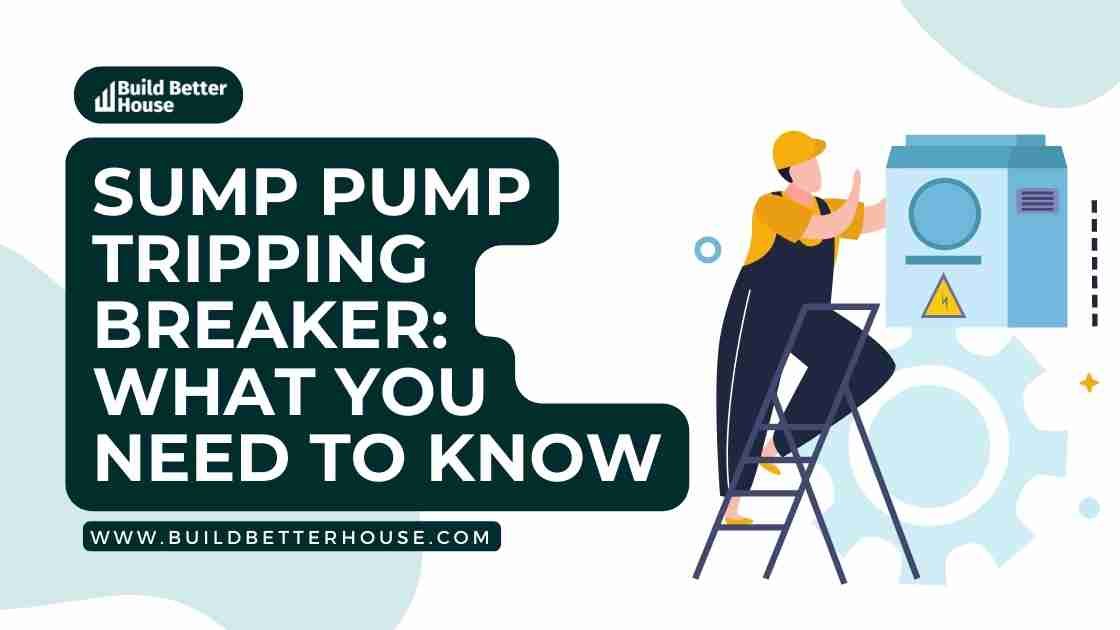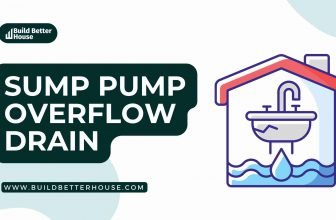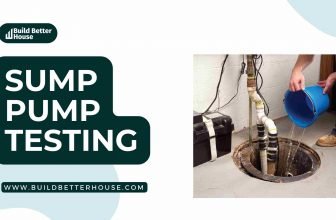Sump Pump Tripping Breaker: What You Need to Know

Are you wondering, “why is my sump pump tripping breaker?”
The discovery that your sump pump occasionally tripped the breaker is not only annoying and disappointing but also dangerous because it constantly shuts off.
But you are not alone if you wonder why is the sump pump tripping breaker on your site. There are many reasons for a sump pump tripping the circuit breaker. These problems often originate from a ground fault or debris blockage.
Scroll down and read the reasons listed below to determine why your sump pump continues tripping the breaker and if your device needs to be serviced or replaced.
Reasons Why Your Sump Pump Tripping Breaker
Several factors can cause a sump pump tripping breaker, and they are:
Water Leakage
Cracks or leaks in the housing are common causes of a sump pump tripping breaker. If the placement of your pump is damaged, water might enter the pump causing it to short circuit. The same thing can happen if your pump leaks, allowing water to enter.
Due to wear and tear, an older sump pump or one constantly running may begin to leak, which will eventually break the bottom of a sump pump. There are various possible causes for this problem, but any cracks or damaged pieces within your pump constitute a significant concern. The easiest way to detect this is to notice the presence of oil in the water.
Sump pump hoses typically attach to your sump pump using a zip tie. When clamps are too tight, hoses can often be damaged, especially if they have moved with force. An unsecured clamp or broken clamp may cause a leak.
Lack of Surge Protection
Power surges can also lead to a sump pump tripping breaker. Installing a surge protector can help you avoid this. It will not only protect your appliances from power surges, but it will also give you additional safe outlets to charge your electronics.
A power surge is simply a sudden and short rise in voltage in an electrical circuit that can damage sensitive devices. This surge of electricity is diverted into the ground by a surge protector.
Most surge protectors are available as a power strip into which you can plug multiple devices to secure them simultaneously. When the power rises above a certain voltage level, the surge protector diverts the extra current into grounding cables, giving the electricity a path away from the equipment.
Damaged Pump Motor
When running the sump pump, this is a prevalent cause of tripping the circuit breaker.
If your pump is old enough, it will cause the sump pump tripping breaker to trip more frequently, and the only solution will be to replace it. And since cheaper pumps may be more challenging to repair and older ones may be more difficult to repair cost-effectively, buying a new system would be the right choice.
A high-quality new pump will last a long period with only essential maintenance, such as keeping the motor and lines oiled.
Damaged Wire
It is also possible for your sump pump to trip the breaker due to faulty wiring in your home.
An older home may have frayed wiring, causing breakers to trip. And if your home’s wiring is outdated, you probably have to consider rewiring it by reaching out to a professional.
Sometimes, you might only need to replace a portion of your home’s wiring. Yet, this cannot be easy without an in-depth examination of your home’s wiring.
Impeller Clog
If the impeller becomes clogged, it will lead to your sump pump tripping breaker, which could solve by cleaning the impeller.
The discharge pipe connects the sump pit to the area where the water drains. If this pipe clogs, the system fails, and water accumulates in the basement.
If you suspect your sump pump is clogged, unplug it and inspect the connections. Also, ensure that the inlet is not obstructed. Dirt will quickly accumulate and clog your system if you do not cover your sump pit with a lid.
Low Rated Extension Cords
Another cause of the sump pump tripping breaker is using low-rated extension cords to connect your system. It would be better never to use extension cords in your sump pump. You should avoid doing so since it could lead to severe accidents. If an extension cord breaks, it can be hazardous.
It isn’t uncommon for people to use extension cords with sump pumps without giving it much thought. And because of the use of low-quality extension cords, this often results in the sump pump tripping breaker and blowing the pump’s fuse. However, by using certified products under the supervision of a professional, you can avoid these situations.
Failed Mechanical Seals
Your sump pump may keep tripping the breaker due to faulty seals!
Pumps use mechanical seals to seal the wet area and prevent leakage from outside. This may result in the sump pump tripping breaker. It will keep the breaker tripping until you repair the seal.
Carbon or graphite are the most common materials used to make seals. If only a small amount of carbon nose remains on the seal, it is worn out, and if there is a significant carbon face, the seal has failed.
Mechanical seals spin on the shaft or shaft sleeve when they fail. Grooves wear into the metal, requiring the shaft or sleeve to be replaced. As a result, once the mechanical seals have worn, they should not be used.
Overload
Another cause of your sump pump tripping breaker is overload. This indicates that the sump pump consumes more power than the breaker can handle. It would be better if you could examine why it draws so much current in such a case. It is an electrical failure that should be resolved by a professional.
If the load is not lowered, an overworked sump pump might quickly trip the breaker. A sump pump is usually activated only when necessary; in the case of flooding or heavy rains, it may run continuously. If that is the case, the sump pump will likely trip the breaker more often.
A standard sump pump with a horsepower rating of 1/3 can handle a normal-sized house. However, sometimes, a sump pump may be required to prevent overload. This is prevalent in larger homes with primary pumps.
How To Prevent Sump Pump Tripping Breaker?
Tripping the breaker when using a sump pump is a common problem that all users encounter frequently. Indeed, you cannot always avoid these issues from occurring. However, if you utilize your system correctly and adhere to the maintenance guidelines, you may minimize the failure or breakdowns in most instances and can extend the lifetime.
When it comes to maintenance, it is always better to follow the guideline of the manufacturer; however, some general guidelines will help you avoid failures in most situations:
- Keep the drainage system clean and ensure that it properly channels water into the pit.
- Regularly remove debris, sand, and gravel from the sump pit.
- Test your sump pump regularly by slowly pouring a few gallons of water into the sump basin and checking to see if the float switch and the pump activates. The pump should remove the water from the bay and then turn it off.
- Check to see whether the discharge pipe is clogged or not.
- Check if the water does not flow back into the pit: a broken check valve could cause that.
Maintaining your sump pump with these tips won’t cost you anything, instead will help you to save your sump pump and your wallet in the long run.
How Do I Troubleshoot A Non-Working Sump Pump?
Most of the time, our sump pump suddenly stops working, leaving us perplexed as to why. We’ll wonder what’s causing it, and we will tempt to call a professional for trivial reasons. So, in addition to the reasons mentioned above, here are a few more troubleshooting tips to look for if your sump pump has failed to work.
- Check the Power Source
First and foremost, check whether your sump pump’s power source is working.
You can quickly check if the socket of the sump pump is live by plugging another appliance into it. If you can turn that on, you can be sure that the pump is also getting power, so the cause of the failure is something else.
- Make sure the float switch is not stuck.
A float switch that has been stuck is a relatively common problem. Usually, the float becomes stuck when the gadget moves from its initial location in the sump basin or when there is debris in the pit. So as a second step, check whether the float can move freely.
- Check Discharge Pipe
The pump will not remove water from your basement if the discharge pipe is clogged or frozen. Check that there is no dirt or ice in the line and that the opening is not blocked.
A fully functional check valve in the discharge pipe should prevent water from flowing back to the pit. If that valve fails, the pump will most likely be unable to remove the water from the pit, causing it to run continuously or relentlessly.
- Make Sure Your Sump Pump Has the Right Size
Make sure you use the correct size sump pump for your building or house. Perhaps your sump pump is functional but lacks the necessary capacity. You should consider purchasing a more powerful pump if this is the case.
Observing the above signs will help determine why is your sump pump tripping breaker. However, if you cannot resolve the issue described here, you should seek professional assistance. a
If the pump continues to trip the breaker despite your efforts, it will need to be replaced. Cheaper pumps are typically difficult to repair due to their shorter lifespan. If the problem continues, replacing the sump pump is the best option.
Conclusion
When a sump pump trips the breaker, you may wonder, “Why is my sump pump tripping breaker?”
Understanding the causes and solutions may help you prevent your sump pump tripping breaker.
A system upgrade might even be necessary. The sump pit won’t be able to be raised out of the water by a tiny pump due to insufficient water pressure. It may even cause the working efficiency of the pump to.
You should also ensure that where the sump pump is installed is not in direct contact with any plumbing—including water pipes, vents, or sewage systems. Overly secure connections could short out the electrical connections protecting those systems.
If you place the pump in a basement, it might not always be accessible.
FAQs
What is the most common cause of the sump pump tripping breaker?
Overload, water in electrical cords, blocked switches, and clogged discharge pipes are the most common causes.
What Does It Mean When a Pump Tripped?
When the breaker trips, the circuit powers the sump pump and turns off. When the pump trip, it will turn off the motor automatically. These may cause the pump to shut off unexpectedly, as in a power outage.
Does a Sump Pump Need a Dedicated Circuit?
We advise a separate circuit for the sump pump. It guarantees that the pump receives a constant current. To prevent surges from damaging the circuit, ensure grounding. Another crucial component is the Ground Fault Circuit Interrupter (GFCI).
Will a Sump Pump Trip a GFCI?
The GFCI is a safety feature that prevents the pump from continuing to operate in case of an electrical failure. Unless there is an electrical problem, a sump pump will not usually trip a GFCI. If the GFCI. trips, you must investigate the situation to determine the source of the problem and rectify it before setting the breaker.
How long does a sump pump last?
The typical lifespan of a sump pump is ten years, but this varies greatly depending on the build quality and frequency of use.






